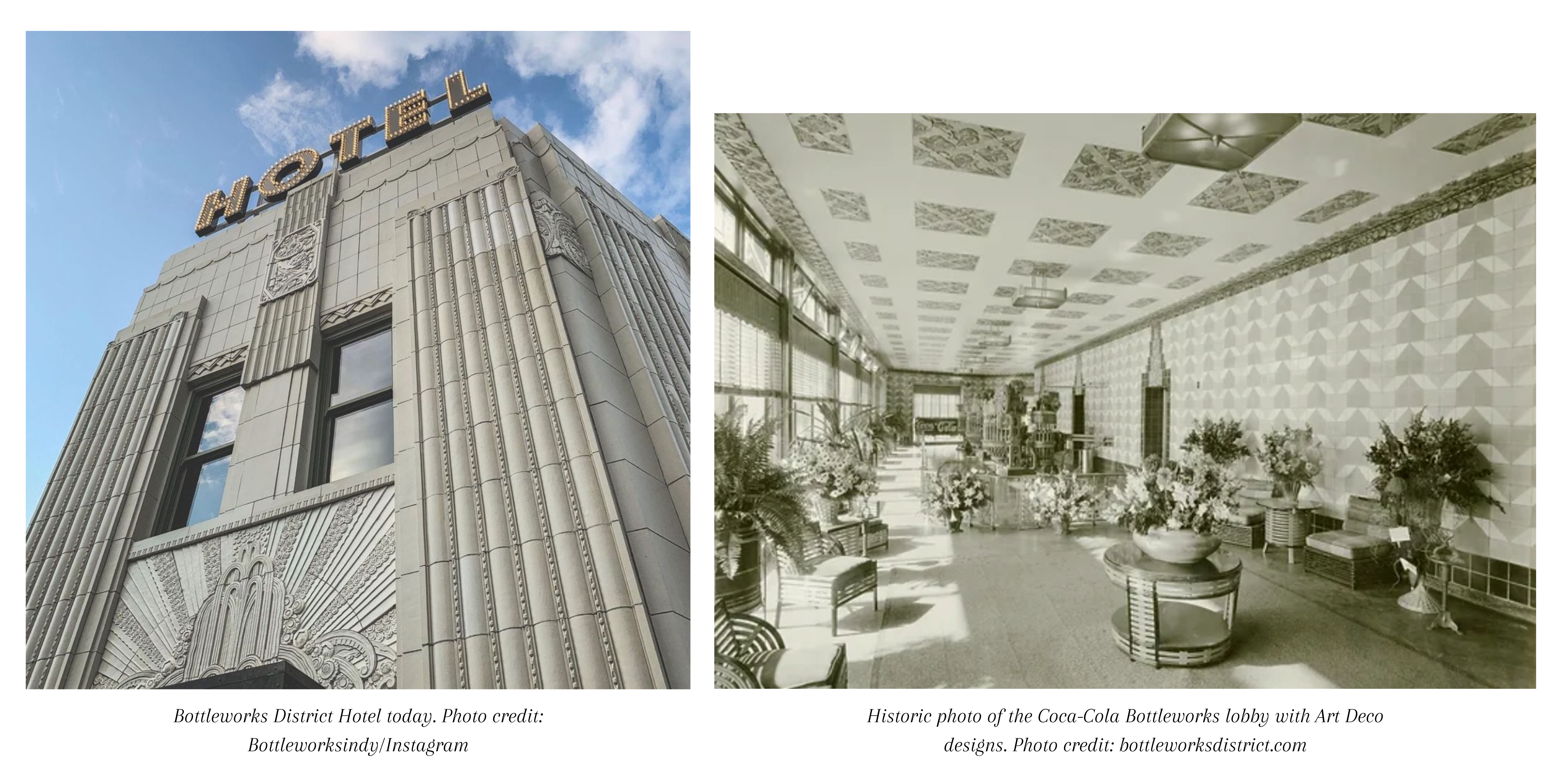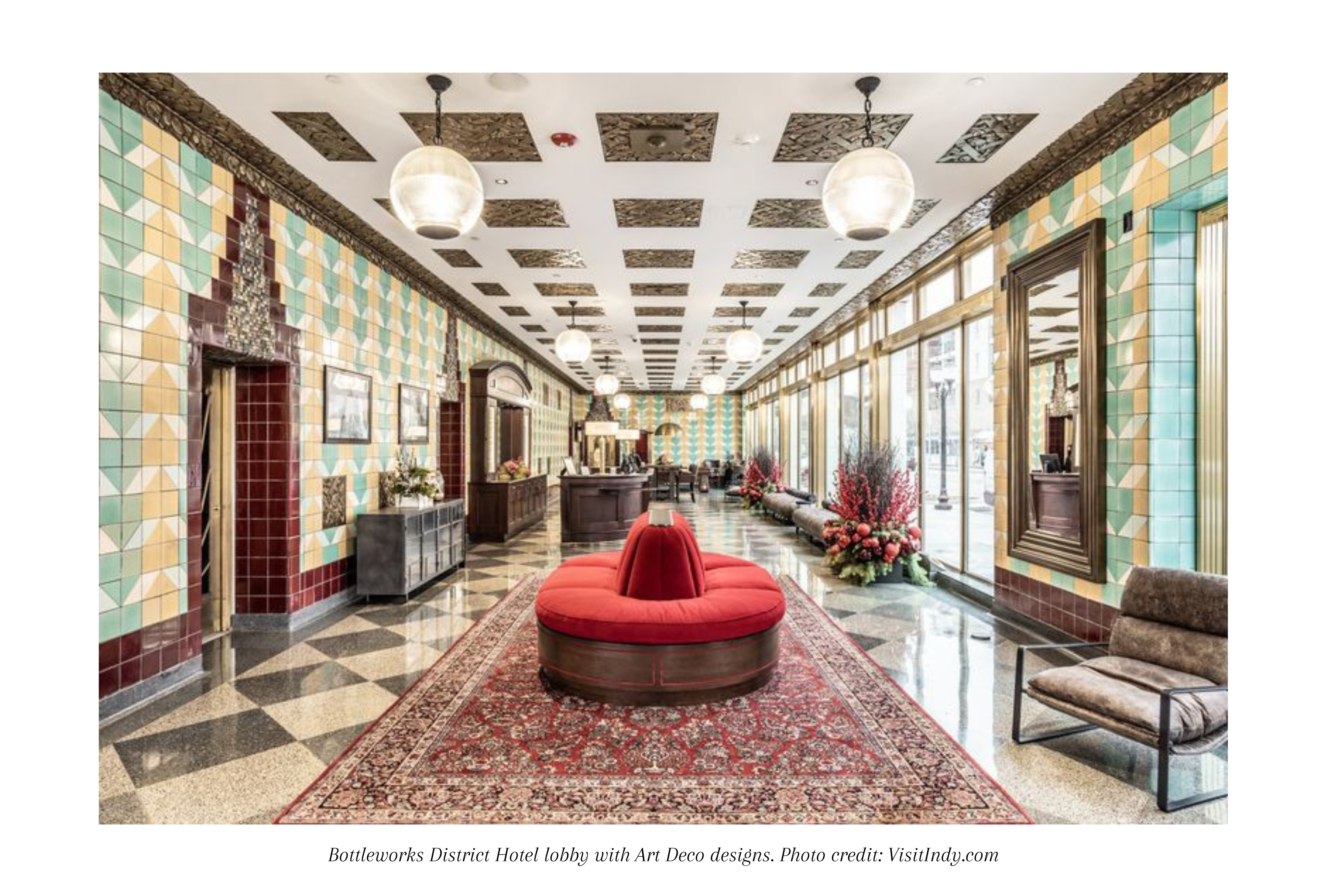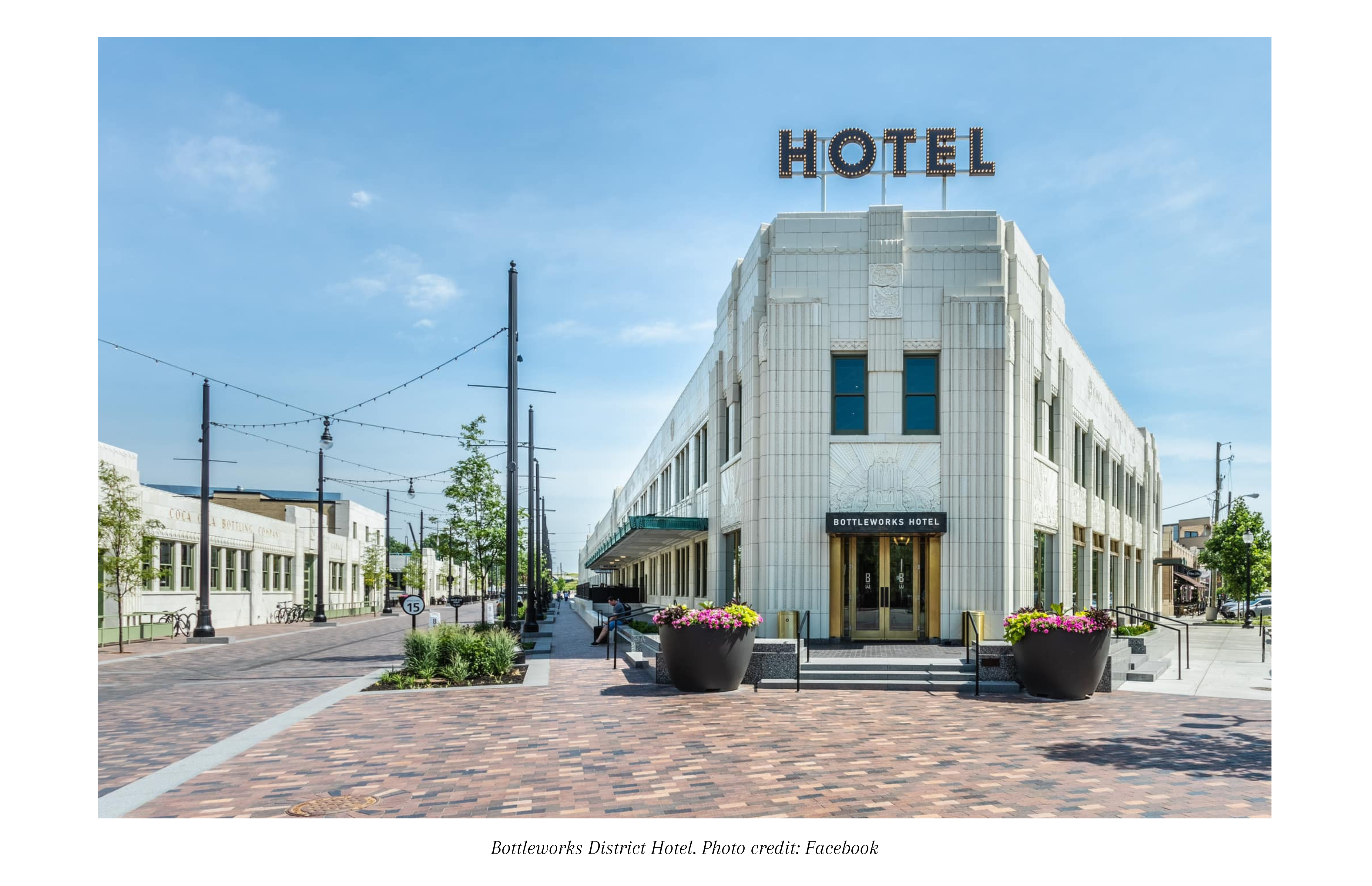Bottleworks District
After acquiring the Indianapolis Coca-Cola bottling franchise in 1915, the brothers ended the Yuncker Bottling Works Company in 1929 and put all their efforts into their Coca-Cola Bottling Company with plans to expand on the property at 860 Massachusetts Avenue, purchased in 1920.

In the early 1930s, the first section of the new plant on Massachusetts Avenue was completed, including a two-story terra cotta-clad building ornamented with geometric fountains and flowers. The main entrance of the trapezoidal building featured a two-story lobby with a circular staircase, terrazzo floor, and a brass-medallioned ceiling. The southwest entrance featured a long marble-topped counter and bright polychrome mosaics. Even the factory portion of the building and the one-story garage area had many Art Deco details on the stair rails and doorknobs.
The Art Deco-influenced building was designed by the local firm of Rubush and Hunter and constructed by William Jungclaus Contractors. (The headquarters of Jungclaus is still just down Massachusetts Avenue.) Further additions were made in the 1940s, with all the buildings covering nearly two blocks.
The bottling plant continued to thrive through the Great Depression and for years after. Following the death of James Yuncker in 1964, Tony Hulman, the owner of the Indianapolis Motor Speedway, bought the building and the bottling rights. Hulman moved the company to Speedway and used the Massachusetts Avenue buildings to store his car collection until he sold it to Indianapolis Public Schools in 1968 to be used as a service center and bus parking.

The site was purchased by Hendricks Commercial Properties in 2017, who faithfully redeveloped the property, opening it as the Bottleworks District in 2021 with a luxurious, AAA four diamond-rated boutique hotel, the expansive “Garage Food Hall,” an upscale cinema, duck pin bowling alley, virtual reality gaming experience, as well as retail and office space. Today, the Bottleworks District, a place with a great history and stunning architecture, has become a hot destination.
The architects and contractor who originally developed the site are also buried at Crown Hill. Founded in 1905, the architectural firm, Rubush and Hunter, was one of most prominent in Indianapolis history. Among its designs are the Columbia Club, Circle Theater, and Circle Tower, all on Monument Circle, as well as the 1910 City Hall building, and the Indiana Theater. Contractor William Jungclaus was a German immigrant who arrived in Indianapolis in 1870. (His uncle was another famous Indianapolis architect, Diedrich Bohlen, the architect of Crown Hill’s Gothic Chapel.) The Jungclaus Company, led by William Jungclaus, and later by his descendants, constructed buildings designed by Bohlen’s firm, as well as those of Rubush and Hunter, and others, including the Murat Temple and the Illinois Building.

Burial Locations
Leo (aka Lee) Yuncker (1874-1947), Section 36, Lot 124; GPS (39.8198961, -86.1662747)
James Yuncker (1879-1964), Section 50, Lot 1; GPS (39.8222188, -86.1677221)
Preston Rubush (1867-1947), Section 78, Lot 13; GPS (39.8225799, -86.1714407)
Edgar Hunter (1873-1949), Section 39, Lot 62; GPS (39.8194014, -86.1656142)
William Jungclaus (1849-1924), Section 25, Lot 229; GPS (39.8186392, -86.1701753)

